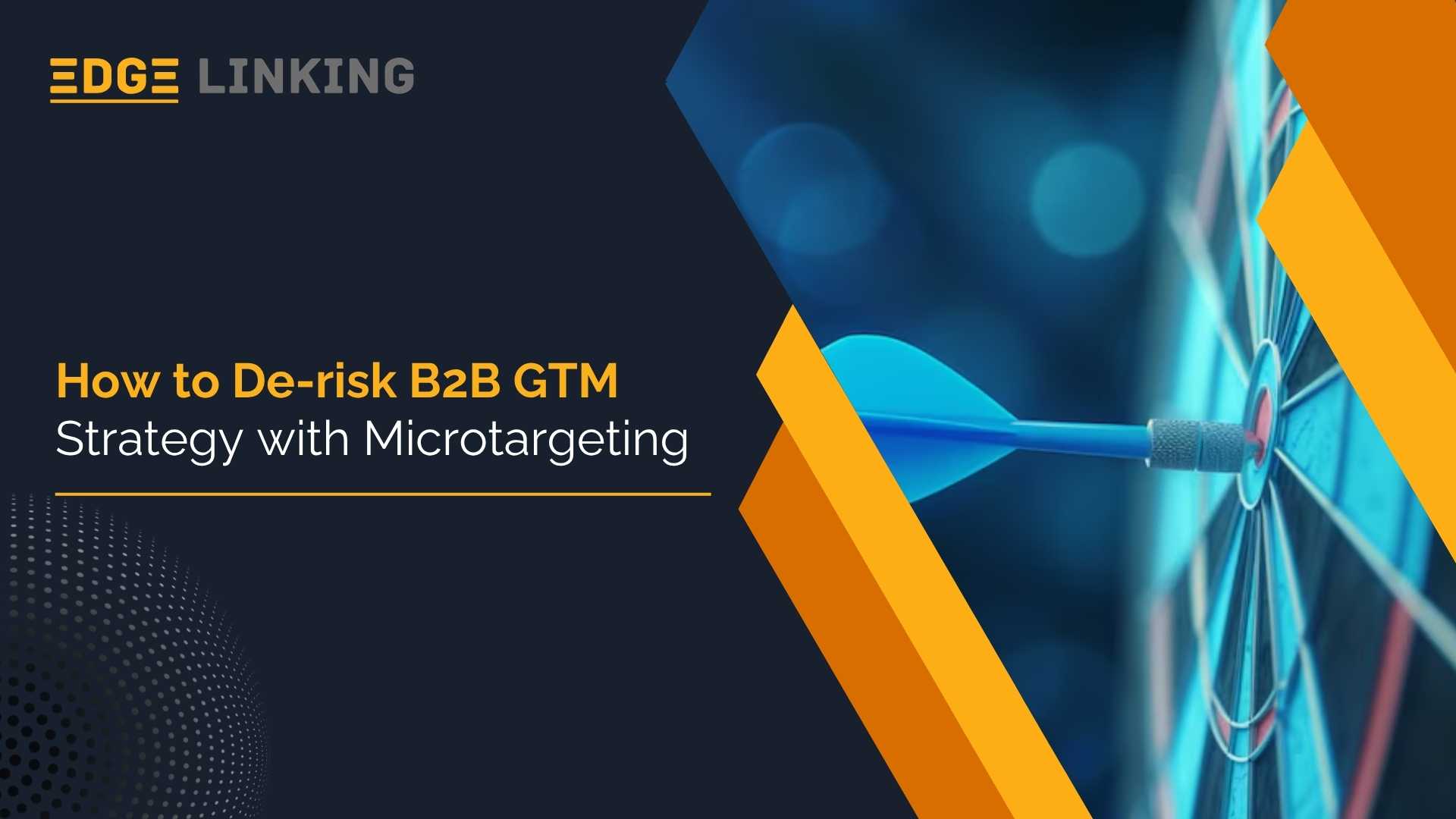Going B2B go-to-market is like going on stage without a script—there’s enthusiasm, but plenty of uncertainty. Make a wrong step, and you risk months of effort, budget down the drain, or even worse, lost business.
Here’s the reality: the B2B market is complex. Your customers are not one, homogenous audience. They are varied individuals, each with their own pain points, motivations, and timelines. And yet, so many GTM strategies still address them as one-size-fits-all audiences.
That’s where microtargeting plays its game-changer. It’s not hype or a cool marketing trick. It’s how you get to know your buyers at a deep level, by using data to identify exactly whom it matters—and then talking straight to them.
If you care about minimizing risk in your GTM strategy—trimming unnecessary spend, shrinking sales cycles, and increasing conversion rates—microtargeting isn’t a nicety. It’s a necessity.
Let’s take a stroll through why this method is so effective and how you can apply it today.
Why B2B GTM Strategies Tend to Feel like a Gamble
Let’s be clear up front about why GTM feels so risky before we get to microtargeting:
Multiple Decision Makers: One deal has finance, IT, operations, and end users all wanting something different.
Long Sales Cycles: Months (occasionally years) of round-robin conversation before a contract is signed.
Expensive: Marketing initiatives and selling efforts can consume your capital quickly.
Market Forces: Technology shifts, new legislations, and changing priorities can render your well-thought-out plan useless in an instant.
Most unsuccessful GTMs are the result of attempting to reach everyone at once. The outcome? Watered-down messaging, wasted effort, and plenty of frustration.
What Exactly Is Microtargeting?
Microtargeting is the process of homing in on little, specific slices within your wider market based on rich data signals.
Rather than saying, “We want to target IT managers,” you say, “We want to target IT managers at mid-sized financial firms who are actively seeking cloud security solutions.”
This moves from broad to focused targeting turns your marketing from noise into conversation.
How Microtargeting Helps De-Risk Your GTM Strategy
1. Find the Right People, Not Just Anyone
With microtargeting, you use firmographics (company size and industry), technographics (what they’re using), and intent data (what they’re looking at online) to identify prospects who are indeed in buying mode.
Forrester discovered that businesses using intent data to micro target had conversion rates increase by as much as 20%. That’s not chance—that’s intelligent targeting.
2. Get Every Marketing Dollar to Work
No longer shotgun campaigns wasting budget on reaching audiences who aren’t interested. Precision targeting allows you to spend where it counts the most.
Forrester says that cost-per-lead reduces by up to 30% when you transition from mass targeting to microtargeting. That level of efficiency makes a significant impact, particularly when budgets for marketing are constrained.
3. Speak Their Language, Solve Their Problems
Generic messaging simply isn’t going to cut it. Once you recognize the particular challenges of a micro-segment, you’re able to design messages that actually ring true.
For instance:
- CFOs need to be told about risk reduction and cost savings.
- IT leaders are concerned about integration and security.
- End-users crave usability and support.
- All of this drives trust and drives prospects more rapidly through the funnel.
4. Break Down Silos Between Sales and Marketing
One of the classic pitfalls of GTM is isolated sales and marketing. Microtargeting builds a common understanding and data-driven playbook that aligns the two teams.
Marketing produces high-quality leads that are customized to sales’ requirements. Sales talks to prospects with better context. The payoff? Reduced friction, faster closings.
5. Remain Agile in an Evolving Market
Markets change rapidly. Microtargeting is based on current data and insights, so you’ll always know what’s performing and what isn’t—soon enough to switch.
That agility is the secret to risk management when the unexpected occurs—whether that’s a competitor launch or an abrupt regulatory change.
Starting Microtargeting in Your GTM Strategy
Invest in quality data: Your CRM, third-party intent data, and technographic tools are treasure troves.
Use AI and analytics: These provide evidence of patterns and segments not readily apparent.
Produce segment-specific content: Craft messaging for each micro-segment.
Test, learn, repeat: Leverage your campaigns as experiments to adjust targeting and messaging.
Encourage cross-team collaboration: Get marketing, sales, and product teams aligned across common data and objectives.
A Real-World Story: Microtargeting That Worked
A B2B SaaS startup introducing a compliance solution didn’t simply target “compliance officers.” They microtargeted:
- Healthcare firm officers recently flagged for audit.
- Firms employing old compliance software.
- Contacts actively seeking out regulatory change.
The payoff?
- 40% improved lead quality.
- 25% shorter sales cycles.
- 30% reduced acquisition cost.
By targeting the right buyers at the right time, they de-risked their entire GTM strategy—and won.
Final Thoughts: Microtargeting Is Your GTM Safety Net
B2B GTM is risky by nature—but that risk does not have to be blind. Microtargeting is your means of placing precision and insight at the center of your strategy.
It’s about spending smarter, messaging sharper, and aligning teams better. Above all, it’s about treating your buyers as individuals with distinct needs, not data points on a spreadsheet.
If you wish your GTM efforts to be less of a risk and more of a calculated, confident move forward, it’s time to take things seriously with microtargeting.






